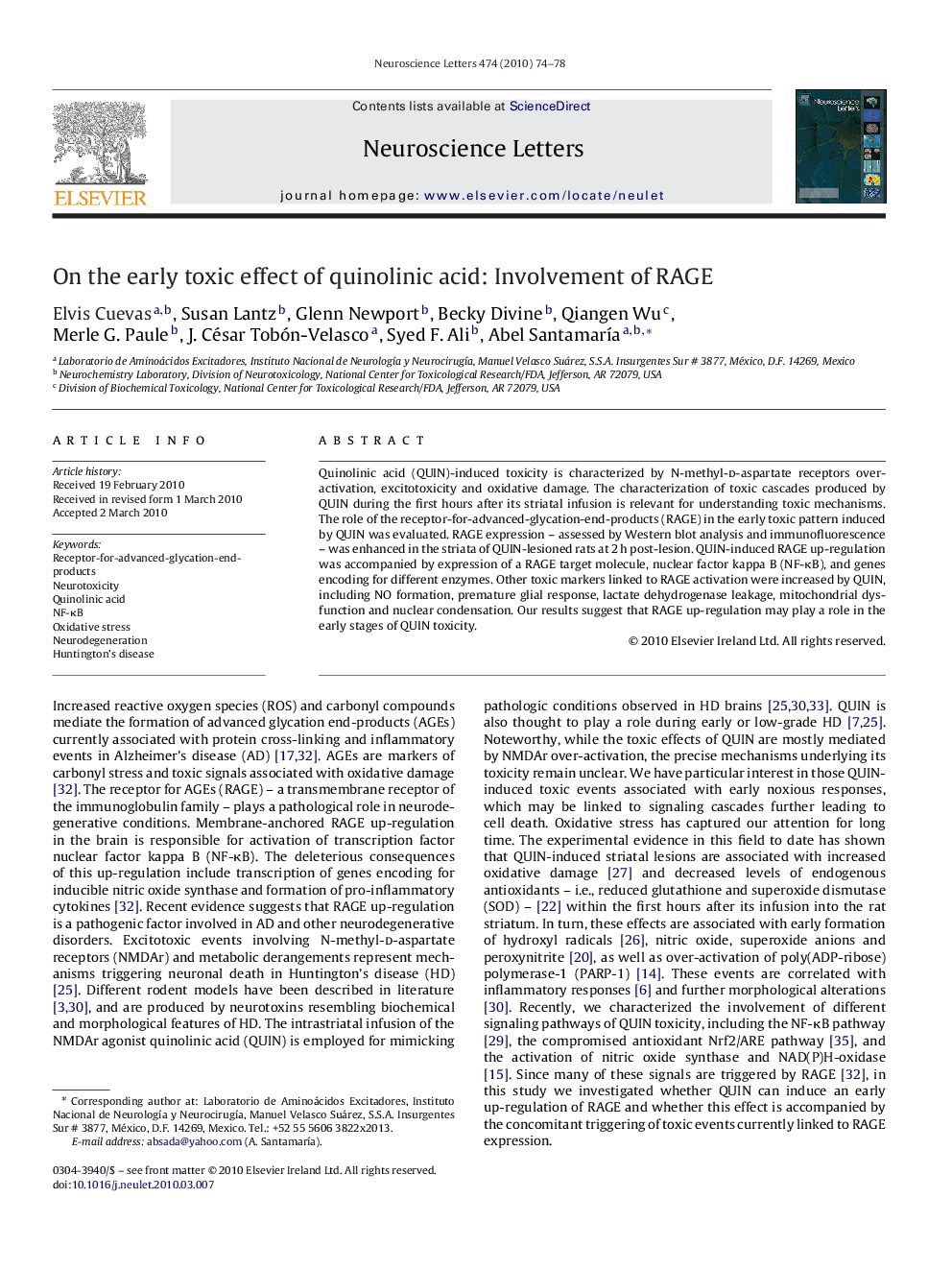| Article ID | Journal | Published Year | Pages | File Type |
|---|---|---|---|---|
| 4346312 | Neuroscience Letters | 2010 | 5 Pages |
Abstract
Quinolinic acid (QUIN)-induced toxicity is characterized by N-methyl-d-aspartate receptors over-activation, excitotoxicity and oxidative damage. The characterization of toxic cascades produced by QUIN during the first hours after its striatal infusion is relevant for understanding toxic mechanisms. The role of the receptor-for-advanced-glycation-end-products (RAGE) in the early toxic pattern induced by QUIN was evaluated. RAGE expression - assessed by Western blot analysis and immunofluorescence - was enhanced in the striata of QUIN-lesioned rats at 2 h post-lesion. QUIN-induced RAGE up-regulation was accompanied by expression of a RAGE target molecule, nuclear factor kappa B (NF-κB), and genes encoding for different enzymes. Other toxic markers linked to RAGE activation were increased by QUIN, including NO formation, premature glial response, lactate dehydrogenase leakage, mitochondrial dysfunction and nuclear condensation. Our results suggest that RAGE up-regulation may play a role in the early stages of QUIN toxicity.
Related Topics
Life Sciences
Neuroscience
Neuroscience (General)
Authors
Elvis Cuevas, Susan Lantz, Glenn Newport, Becky Divine, Qiangen Wu, Merle G. Paule, J. César Tobón-Velasco, Syed F. Ali, Abel SantamarÃa,
